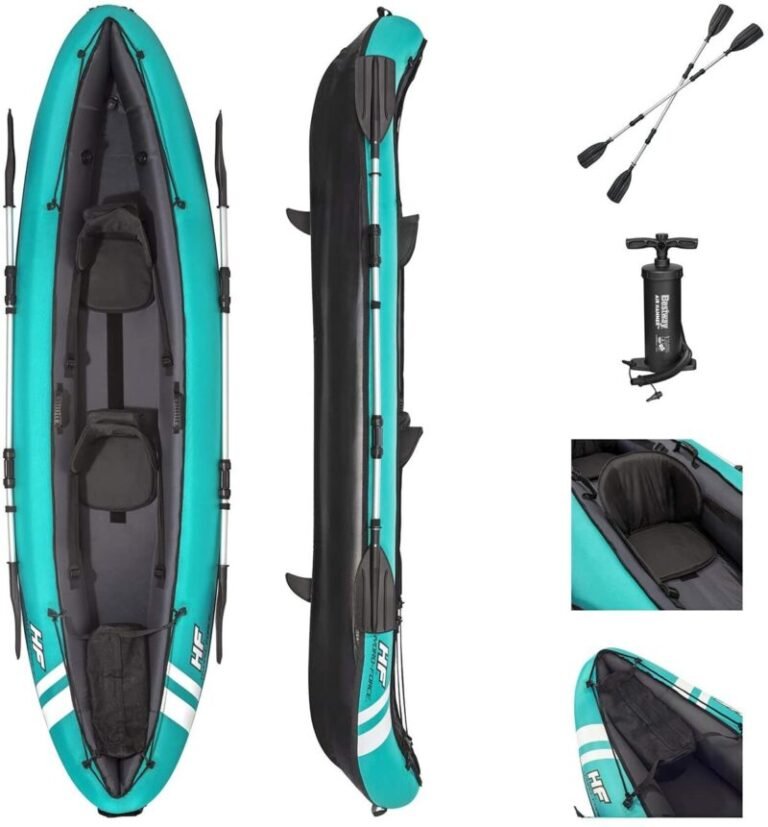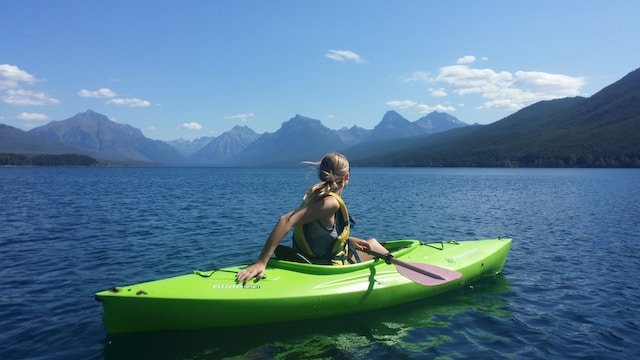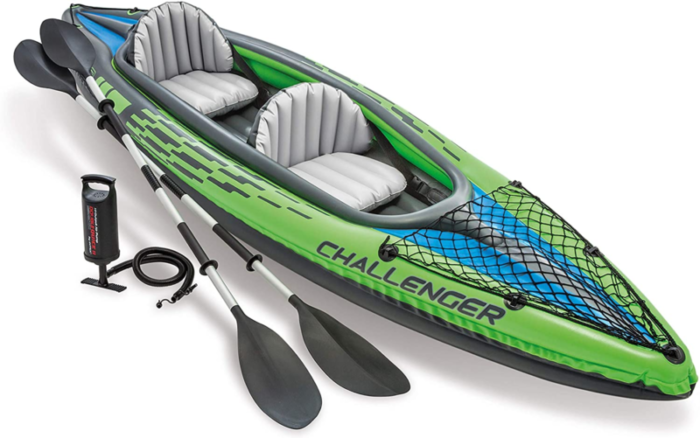What to Wear Kayaking in Florida
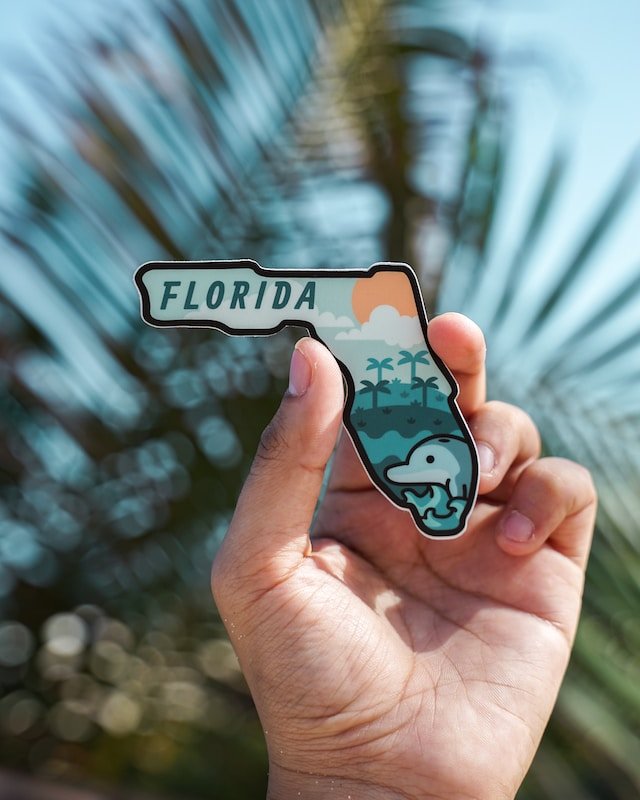
Florida’s diverse waterways make it a kayaker’s paradise. From calm springs and winding rivers to the vast seas of the Gulf of Mexico and the Atlantic Ocean, the Sunshine State offers kayaking excursions for enthusiasts of all levels.
However, to make the most of your paddling experience in Florida, it’s necessary that you wear suitable clothing. Not only does the appropriate apparel assure your comfort, but it also plays a significant role in your safety and overall enjoyment on the water.
Why Proper Kayak Clothing Matters
Before we get into the intricacies of what to wear while kayaking in Florida, let’s explore why it’s crucial to pay attention to your outfit.
Comfort
Kayaking generally entails spending several hours on the water, and discomfort may rapidly turn a fun trip into a terrible one. The right clothes keep you comfortable by providing protection from the surrounding elements and minimizing chafing or irritation.
Safety
Florida’s waterways can present unexpected challenges, including sudden weather changes and wildlife encounters. Proper clothes can help protect you from sunburn, hypothermia, and potential dangers.
Enjoyment
Wearing the proper gear improves your whole kayaking experience by letting you concentrate on the breathtaking scenery and exhilarating paddle. It enables you may fully immerse yourself in the adventure without being distracted by discomfort or safety worries.

What to Wear Kayaking in Florida
Now that we’ve established the importance of proper attire let’s explore the specific clothing items and accessories you should consider for your kayaking adventures in Florida:

1. Quick-Drying Clothing
Select materials like polyester and nylon that wick away moisture and dry rapidly. Put on pants and a long-sleeved shirt to shield your skin from the sun and any potential scratches.

2. Swimsuit
Kayaking in Florida requires a swimsuit because you’ll probably get wet. It’s also comfortable to paddle in and dries quickly.

3. Sun Protection
Wear a wide-brimmed hat to shield your face from the sun. Applying sunscreen to exposed skin is important, especially if you want to swim.
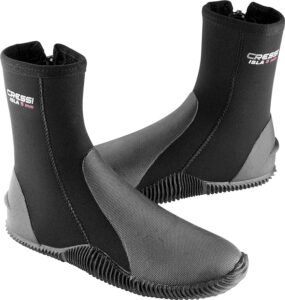
4. Footwear
Select neoprene boots or water shoes with strong traction to shield your feet and offer stability on slick conditions.

5. PFD (Personal Flotation Device)
Always wear a properly fitted PFD, which is a safety essential. Look for PFDs designed for paddling to ensure freedom of movement.
6. Layering
Depending on the season and location, consider layering with a light jacket or wetsuit for added warmth.

7. Hat and Sunglasses
Sunglasses with UV protection and a strap to keep them secure are essential for eye safety. A hat with a chin strap can help shield your eyes and face from the sun.

8. Dry Bag
Carry a dry bag to protect your valuables like your phone, camera, and snacks from getting wet.

9. Gloves
Paddling gloves can provide extra grip and protect your hands from blisters.
10. Insect Repellent
In some areas of Florida, especially near still water, mosquitoes and other insects can be a nuisance. Pack insect repellent to stay comfortable.

Florida’s Climate and Geography
To truly understand what to wear while kayaking in Florida, it’s essential to consider the unique blend of climate and geography that characterizes this beautiful state.
Florida’s weather patterns, diverse water bodies, and geographical features play a significant role in determining the ideal attire for your kayaking adventures.
Year-Round Appeal
Florida boasts a year-round appeal for kayaking, thanks to its relatively mild climate. While it can get scorching hot during the summer, winters are generally mild, making kayaking a viable option throughout the year.
Hot and Humid Summers
Summers in Florida are typically hot and humid, with temperatures ranging around 90°F (32°C). Frequent afternoon thunderstorms are common during the summer months, bringing sudden rainfall.
Mild Winters
Most places experience substantially milder winters, with temperatures between 50°F and 70°F (10°C and 21°C). Snowfall is practically unheard of, and frost is scarcely seen.
Different Types of Water Bodies in Florida
Rivers
Florida boasts numerous rivers, both slow-moving and fast-flowing, offering diverse kayaking experiences. Popular river kayaking destinations include the Suwannee River, Ichetucknee River, and Loxahatchee River.
Springs
The state is renowned for its crystal-clear freshwater springs, providing a unique kayaking experience. Springs like Wakulla Springs and Silver Springs offer stunning underwater visibility. However, in recent times, the Wakulla Springs has darkened.
Lakes
Florida is dotted with lakes of various sizes, offering serene paddling opportunities. The biggest lake in Florida, Lake Okeechobee, is a kayaker’s paradise. Many kayakers like to explore the creeks and tributaries.
Coastal Areas
With its extensive coastline along the Atlantic Ocean and the Gulf of Mexico, Florida offers coastal kayaking with diverse ecosystems. The Everglades, Florida Keys, and the Ten Thousand Islands are popular coastal kayaking destinations.
How Florida’s Climate and Geography Influences Your Kayak Clothing Choices
The diverse climate and geography of Florida have a profound impact on the attire you should choose for kayaking in the state.
Hot and Humid Summers
Lightweight, moisture-wicking apparel is crucial to staying cool and dry throughout the intense summer months. Remember to protect yourself from the sun; your best friends should be a wide-brimmed hat, sunglasses, and sunscreen. Be prepared for sudden afternoon showers by packing a waterproof jacket.
Mild Winters
You can choose somewhat thicker apparel, such as a light jacket and long-sleeved shirt, during the milder winters. Consider wearing a wetsuit if you intend to kayak in spring-fed rivers or coastal locations where the water may still be cold.
Water Body Considerations
If you’re kayaking in freshwater springs, a swimsuit and quick-drying shirt are ideal, as you’ll likely take a refreshing dip. Coastal kayaking may require more substantial attire due to potential wind and saltwater exposure.
PFD
Regardless of the season or location, always wear a PFD for safety. Florida’s diverse water bodies can pose unexpected challenges.
Choosing the Right Apparel
Understanding Florida’s climate and geography allows you to tailor your kayaking attire to the specific conditions you’ll encounter, ensuring a comfortable and safe journey.
So, whether you’re exploring the picturesque springs, meandering rivers, tranquil lakes, or captivating coastal areas, dressing appropriately is the key to an unforgettable kayaking experience in the Sunshine State.
Importance of Moisture-Wicking Materials in the Florida Heat
Florida’s heat can be intense, especially during the summer. Moisture-wicking materials are your best friend in such conditions.
These fabrics pull sweat away from your skin, allowing it to evaporate quickly, keeping you cool and dry. Look for clothing made of materials like nylon and polyester with moisture-wicking properties.
Kayaking involves repetitive arm movements, and the last thing you want is chafing. Breathable clothing helps reduce friction and discomfort. Avoid cotton, as it retains moisture and can lead to chafing.
Sun-Protective Clothing
UPF-rated clothing is designed to block harmful UV rays, providing an added layer of sun protection. Look for clothing items labeled with UPF ratings, which indicate the level of UV protection they offer.
Types of Sun-Protective Clothing and Accessories
- Rash Guards: These are long-sleeved shirts designed for water activities, providing excellent UV protection and minimizing sunburn risk.
- Sun Shirts: Lightweight, long-sleeved shirts made with UPF-rated fabrics offer full-arm protection from the sun.
- Leggings and Pants: Consider UPF-rated leggings or pants to protect your lower body, especially during extended kayak trips.
- Neck Gaiters and Buffs: These versatile accessories can be worn around your neck or pulled up to cover your face, protecting against both sun and wind.
Footwear Suitable for Florida’s Wet Conditions
Florida’s water bodies are inviting, and you’ll likely get wet. Proper footwear is crucial. Water shoes or neoprene booties provide protection, comfort, and traction in wet conditions. Ensure they have good drainage to prevent water from pooling inside.
If you plan to navigate rivers with rocky bottoms, opt for footwear with durable soles to protect your feet. For sandy shores and boat launches, sandals with adjustable straps are a practical choice, allowing quick removal of sand and water.
Wide-brimmed hats and Caps for Sun Protection
A wide-brimmed hat is your shield against the relentless Florida sun. It provides shade to your face, neck, and shoulders, reducing the risk of sunburn. Look for hats with chin straps to keep them secure on windy days.
Cooling Neck Gaiters and Buffs are multi-functional accessories that offer more than sun protection. When soaked in water, they provide instant cooling relief in the heat. They can also be worn as headbands, face masks, or neck warmers in cooler conditions.
By carefully selecting your kayaking attire, including lightweight and breathable clothing, sun-protective gear, water-friendly footwear, and appropriate headgear, you’ll be well-prepared to tackle Florida’s diverse waterways.
These choices not only enhance your comfort but also ensure you can fully savor the beauty of the Sunshine State while staying safe and protected from the elements.
Water Temperature Considerations
Navigating Florida’s diverse waterways means encountering varying water temperatures. There are gear and precautions to take when dealing with different water temperatures.
Choosing PFDs Suitable for Florida’s Warm Water
In Florida, water temperatures can vary greatly, but many areas feature warm waters, especially during the summer. Choose PFDs designed for warm water use, which tend to be more lightweight and less restrictive than cold-water PFDs.
Look for inflatable PFDs or low-profile foam models for added comfort in the heat. It is crucial that your PFD fits properly and is comfortable for extended wear.
Adjustable straps and a snug fit ensure security without sacrificing comfort. Test your PFD in a controlled environment before heading out to make sure it doesn’t restrict your movements.
When and Why to Wear Wetsuits or Rash Guards in Florida
While Florida generally has warm waters, there are exceptions, especially in spring-fed rivers and coastal areas during the cooler months. Wetsuits and rash guards are beneficial when water temperatures are cooler or if you’re prone to getting chilled.
Types of Wetsuits and Rash Guards for Different Conditions
- Full Wetsuits: These cover your entire body and are suitable for cooler waters. Thickness varies, with thicker wetsuits offering more insulation.
- Shorty Wetsuits: These cover the torso and upper legs and are ideal for milder conditions or when you need more flexibility.
- Rash Guards: Lightweight and comfortable, rash guards provide UV protection and help prevent chafing. They’re excellent for warm days when sun protection is the primary concern.
Staying Hydrated in the Florida Heat
Florida’s heat and humidity can lead to rapid dehydration, especially when kayaking. Always carry an ample supply of water to stay hydrated throughout your trip. Options for Carrying Water and Electrolyte Drinks
- Hydration Bladder: A hydration bladder is a convenient way to carry a large volume of water on your kayak. It typically features a hose for easy sipping while paddling.
- Water Bottles: Stash water bottles in accessible pockets or holders on your kayak for quick access.
- Electrolyte Drinks: Consider carrying electrolyte drinks to replenish lost salts and minerals due to sweating, particularly on longer trips.
Bug Protection
Exploring Florida’s lush waterways often means encountering a variety of bugs and potential encounters with marine life. It is important that you protect yourself.
Tips for Dealing with Mosquitoes and Other Insects in Florida
- Choose the Right Time: Plan your kayaking trips during times when insect activity is lower, typically during daylight hours. Avoid dusk and dawn when mosquitoes are most active.
- Wear Long Clothing: Cover your arms and legs with lightweight, breathable clothing to minimize exposed skin. Loose-fitting options can help deter insects from reaching your skin.
- Insect-Repellent Clothing: Consider insect-repellent clothing, which is specially treated to deter mosquitoes and other bugs. These garments are a valuable addition to your kayaking attire.
- Use Insect Repellent Sprays: Apply insect repellent on exposed skin according to the product’s instructions. Look for repellents with DEET, picaridin, or oil of lemon eucalyptus for effective protection.
- Seek Natural Remedies: Some natural remedies like citronella candles and essential oils can provide mild mosquito deterrence.
Protective Clothing Against Jellyfish Stings
Wear a Rash Guard: A long-sleeved rash guard not only offers sun protection but also acts as a barrier against jellyfish stings. Look for one made of thicker material if you’re concerned about jellyfish encounters.
Protective Leggings: Consider wearing leggings or pants made from durable, lightweight fabric to protect your legs from jellyfish tentacles. Some options are designed specifically for water activities.
Wetsuit and Petroleum Jelly: Wetsuit protects you from hypothermia and Jellyfish stings. To protect your face from stings, apply vaseline or petroleum jelly.
How to Minimize Encounters with Marine Life
Paddle Carefully: Keep an eye on the water as you paddle. Avoid paddling over seagrass beds, coral reefs, or known jellyfish habitats.
- Learn About Local Species: Familiarize yourself with the types of marine life common to your kayaking location. Knowledge of local species and their habits can help you avoid unwanted encounters.
- Respect Wildlife: Maintain a respectful distance from marine life and refrain from disturbing or touching them. Remember, you are a guest in their environment.
- First Aid Kit: Carry a basic first aid kit that includes supplies to treat minor stings or injuries from marine life.
By following these tips and equipping yourself with appropriate gear like insect-repellent clothing and protective rash guards, you can minimize the nuisance of bugs and reduce the risk of encountering marine life-related issues during your Florida kayaking adventures.
This allows you to fully enjoy the natural beauty of the state’s waterways without unnecessary distractions or discomfort.
Safety Gear and Equipment
Safety should always be a top priority when kayaking, especially in Florida’s diverse waterways. Let’s explore the essential safety gear and equipment you should consider for a safe and enjoyable kayaking experience.
Kayak Skirts
Kayak skirts are designed to keep water out of the cockpit area of your kayak, helping you stay dry and comfortable. They are particularly valuable when paddling in areas with waves, wind, or choppy conditions.
A properly fitted kayak skirt can also improve the kayak’s stability by preventing water from entering the cockpit and affecting your balance.
Choosing the Right Skirt for Florida Kayaking
Opt for skirts made from durable and waterproof materials, like nylon or neoprene. Consider a breathable material if you’re kayaking in Florida’s warm weather to prevent overheating. Ensure the skirt is the right size for your kayak’s cockpit. A snug fit is essential to keep water out effectively.
Paddle Leashes
Paddle leashes are tethers that secure your paddle to your kayak. They prevent your paddle from drifting away if you accidentally drop it, especially in windy or choppy conditions.
Attach one end of the leash to your paddle shaft and the other end to a secure point on your kayak. Make sure the leash is neither too long nor too short to allow comfortable paddling without getting tangled.
Whistles and Safety Devices
Whistles are compact, effective signaling devices that can be crucial in emergencies. Three short blasts on a whistle is an internationally recognized distress signal. In Florida, whistles are mandatory on most water vessels including kayaks.
Types of Safety Gear to Carry While Kayaking in Florida
- Personal Locator Beacons (PLBs): These devices can transmit your GPS coordinates to search and rescue teams in case of an emergency. They are especially useful for remote kayaking adventures.
- Communication Devices: Carry a waterproof, floating radio or a waterproof phone case to stay in contact with others or call for help if needed.
- First Aid Kit: Always have a basic first aid kit on hand to treat minor injuries or emergencies while kayaking.

